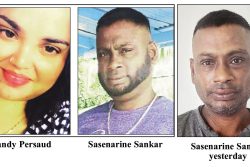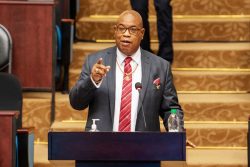Dear Editor,
Against the background of widespread expressions of grief at the passing of Lata Mangeshkar and simultaneously, calls to decolonize the new Atlantic Readers, I take the opportunity to make an intervention on the intersection of decolonization and Indian Music in Guyana.
Indian music arrived in Guyana with indentured Indians between 1838 and 1917. Dominated with arrivals from the Bhojpuri Belt of Western UP and Western Bihar, they formed communities in the logies around the hundreds of sugar factories and attempted to replicate Indian village life. Meaning that the full range of traditional folk and religious music was reconstituted including the female-dominated maticores preceding marriages.
When the “dulha/bridegroom” marriage parties arrived from distant villages (same-village marriages were taboo!) they remained overnight: night weddings were standard until the late 1940’s. There would be biraha singing competitions between the two “sides” – accompanied with harmoniums and dholaks – where spontaneous compositions were belted out. These compositions evolved into Estate-English ditties like “Bangali Babu”. and “O Maninja”
There would be songs for every part of the life cycle; for instance, sohars at birth of a child, especially by hijras/ third sex individuals whose blessings were valued. The chowtaals, accompanied by jaals/cymbals and dholaks, were sung in traditional call and response style with much gusto at Phagua celebrations. At religious ceremonies such as Jhandies for Hindus and Koran or Milad Shareef for Muslims, Bhajans and Quasidas were respectively sung. The rum shops facilitated much improvisations in music and instruments: the table tops became incredible percussion instruments.
With the introduction of Bollywood movies from the late 1930’s – Balasaheb Joban in 1937 – and the introduction of radio stations in Guyana around the same time, “filmi” songs soon displaced the traditional folk music – but the singing simply morphed. Starting in 1938, Station ZFY played local sponsored Indian filmi music and became Radio Demerara in 1951 after it was bought over by expatriate Rediffusion. The Indian music – religious and filmi – remained relegated to “Dayclean” (5:30am) to reach the sugar workers before they left for work. That designated time slot remains into the present. The filmi singers, Lata, Mukesh and Rafi emerged to rule the roost into the present.
By 1950 when the sugar industry would launch in largest housing drive in the Caribbean, obtaining a radio was not a luxury but a necessity as much as stairs. Rooplall Monar was to name the novel about this move from the logies, “High House and Radio”. At that time, the local radio announcers became almost as iconic as the playback singers with the “Man with the Golden Voice”, Ayube Hamid setting the standard and Eshri Singh a close second. They had a three-hour block with seven shows featuring Indian music, including local performances, on Sunday afternoons. On Monday nights, there would be “Indian Memory Album” (“oldies”) hosted by Ayube Hamid, with his signature theme song, “Sohani Raat”.
In the 1950’s, Eric Williams had pointedly gentrified the “lower class” African Trinidad art forms such as tamboo bamboo, pan and calypso, into his decolonizing “national culture”. The last two were imported wholesale into Guyana and added to Masquerade as “Guyanese” national culture music. But Indian music, even the local compositions such as taan, biraha, or creolized songs in Estate English were never considered “national folk songs”. As were, for instance, “Sitira Gyal” or “Itanami” to be played on “Broadcast to Schools” to impressionable schoolchildren. No thought was given even by Cheddi Jagan’s supposedly “Indian” government between 1957-1964 to encourage Indian music.
The PNC’s stance on Indian music in the public sphere was exemplified around 1985, when, according to Eshri Singh, Minister of Information Yvonne Harewood-Benn in a presumably “decolonizing” move ordered him to insert “English” songs between the Indian ones in his privately sponsored Sunday shows. He quit in disgust and emigrated to NYC. In 1998, Moses Nagamootoo was to warn against “more Indian music” on the airwaves. The National School of Music, founded in 2011, teaches no Indian musical instrument or singing.
Sincerely
Ravi Dev






